Everyone knows what a conveyor is. They simply move product from Point A to Point B, right? In principle, that’s true, but there’s much more to modern conveyor design and operation than meets the eye. Once viewed as an afterthought on a production line, conveyors have become an integral component in a material handling application. While they still move product from point to point, they do so in a much more proficient and effective manner.
Here are some recent trends in conveyor design and accessories, as well as tips to keeping your conveyors properly maintained. Using these advanced conveyors could allow your equipment or machinery to do more than it presently does by improving its efficiency and productivity.
Basics of industrial conveyors
A conveyor is designed to move material or products to improve efficiency and throughput. Just about any product made, from metal, food and cosmetics, to medical supplies, plastics, boxes and much more, is moved on a conveyor during the manufacturing process. Conveyors come in all shapes and sizes, from a belt width of less than 2 in. for moving extremely small parts, to several feet for handling large, bulk items. In addition to moving product, conveyors are used to improve production efficiencies, provide a higher level of employee safety and reduce product handling. Moreover, to minimize risk and maximize safety, safety clothing and accessories like Printed Hi Vis Vest are required for every employee.
Most conveyors in light to medium-duty applications use a belt that’s wrapped around two or more pulleys. A motor powers the pulleys, which in turn moves the conveyor’s belt. Numerous styles and materials of belts are available to meet specific applications. Some belts are low friction, meaning product can slide a bit on the belt for more accumulation-types of applications. High friction belts, on the other hand, have more grip to better hold products to the belt.
Design innovations in today’s conveyor technologies
Backlit conveyors — These conveyors have light fixtures installed inside the frames to emit light through translucent belts. Such conveyors are used in applications calling for in-line vision or visual-system interface inspection processes by supplying enhanced contrast between the product and conveyor belt. Parts can be stopped directly over the lighted section, or can continue through uninterrupted.

Metal-free conveyors — Certain applications require a metal-detection inspection process to check the product for metal shavings. To accommodate this need, metal-free conveyors are designed with a portion of their steel bedplate removed and replaced with a Delrin (an inflexible polymer developed as a tough heat-resistant metal substitute) bedplate over the inspection area. This design allows the metal-scanning device to check the passing product without receiving false readings from the bedplate.

Single-drive multiple belts – When applications call for moving two or more lanes of product, common-drive and multiple-belt conveyors present energy-efficient options. Common-drive conveyors allow two or more conveyors to be driven from a single gear motor using a common drive shaft or coupled shafts. Multiple-belt conveyors allow two or more individual belts to be mounted onto a single conveyor frame.
Magnetic conveyors – Built with ceramic magnets in the conveyor belt, these units fit applications requiring parts to adhere to the belt during processing, or for jobs that require elevation changes. The strength of the magnets can be adjusted for use in inverted applications.
Vacuum conveyors – These work with a perforated belt, drawing air through grooves in the conveyor bedplate. Vacuum conveyors hold parts securely to the belt for inspection, assembly and feeding applications, can move parts on an incline, and will maintain control of flimsy parts or material in transit.

Pivot conveyors – Mounted to a pivot base, these conveyors can swing out of the way to provide walk through line access for employees. Interlock switches and a timer allow the conveyor to clear before the gate opens, preserving full product control. Product flow can automatically resume after the conveyor returns to the inline position.
Timing-belt conveyors – Here, a timing belt replaces the standard conveyor belt and can be used as the actual conveyor belt in conjunction with a toothed conveyor pulley. Timing-belt conveyors provide excellent belt-movement control for accurate part or fixture positioning.
Industrial conveyor accessories
Shaft encoders – Manufacturers mount encoders to the conveyor’s drive shaft to sense shaft rotation or to count pulley revolutions for accurate control of the belt in feeding or indexing applications.
Diverters and gates – These accessories control the continuous flow of product on the conveyor. Diverters and gates act as guides controlled by proximity switches, photo eyes or counters and change product direction to single or multiple locations. Diverters and gates can meter flow to specific areas or separate products based on specific attributes.
Pushers – These mount at the side of the conveyor or overhead, depending on the product and required stroke length, to move product from the conveyor perpendicular to the flow.
Servo drives – Servo drives accurately stop the conveyor to provide precise part location. They also enable controlled acceleration and deceleration and are ideal for assembly operations.
Conveyor system maintenance
Once your equipment is up and running, it’s imperative it keeps operating well. It doesn’t do anyone any good to have a several hundred thousand dollar system sitting idle because the supporting conveyor system is down for maintenance. Establishing an ongoing preventive maintenance program for conveyors is one way to trim downtime by catching potential problems before they could shut down an entire line.
One of the first things to consider when establishing a preventive maintenance program is how often the conveyors are operating. Obviously, the more hours each day they run, the move often they need to be rotated out for maintenance.
Consider creating an inventory database of all facility conveyors containing key information, such as the makes and models of conveyors, dimensions (conveyor length and belt width), type of motor, type of belt, serial numbers for bearings, date of last maintenance check and date of next inspection, type of maintenance performed and phone number of the manufacturer.
There’s no right or wrong way to create an inventory database; it can be as simple or extensive as you want it to be. The purpose is to get control of a company’s conveyor fleet and start tracking the conveyors, ultimately for improved performance.
The next step in starting a preventive maintenance program is establishing a bench stock of common replacement parts for conveyors. Items such as belts and bearings are ideal parts to keep on hand. After operating your conveyors for a while, you’ll know which parts may require additional maintenance, so keep an extra stock of those items. With belts, a general rule is to keep at least two replacement belts for each style of conveyor operating in a plant. That way, if two belts are damaged in a matter of days, the belts can be quickly replaced with minimal downtime to the overall operation it supports. Additionally, some manufacturers offer kits of common replacement parts for their conveyors, which can be an easy, time saving way to keep parts for specific conveyors on hand for quick repairs.
If personnel see a frayed or ripped belt, it’s best to pull the conveyor off the line and replace the belt immediately. Although the belt change may slow down production a bit, the alternative may involve the conveyor breaking down during a production run, which could cause damage to other, more expensive machinery components.
When pulled in for preventive maintenance, wash conveyors and spindles with hot water and a light chemical cleaner. This removes any dirt, grease and lubricating oil built up on the conveyor. Prior to placing the conveyors back in service, grease the bearings, if necessary, and top off lubricant in the gear boxes.
Selecting industrial-conveyor features
Selecting the proper conveyor system for your equipment or machinery can make or break your company’s name in the eyes of your customers. In the overall scope of the project, conveyors can be a rather inexpensive component. When selecting a conveyor, here are a few things to consider:
• Will moisture be present in your application?
• Does your application require the conveyor system to have inclines, declines or curves?
• Does your application need to be sanitary?
• What types of products is your application moving?
• What is the maximum weight of the products being moved?
• Does the conveyor need to operate at a certain speed?
Knowing this type of information will help you get started in selecting the right conveyor system for the application.
Feature author: Mike Hosch, P.E., Director of Product Development, Dorner Mfg. Co. || Reprint info >> || www.dornerconveyors.com

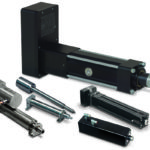
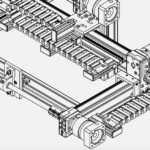
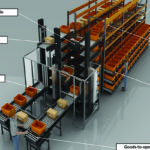
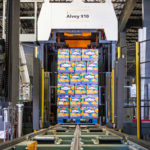
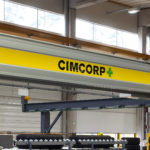

Living in Utah means dealing with drastic elevation issues so your description of magnetic conveyor belts is quite useful. Maintenance is crucial to keeping your conveyor belt efficient and long lasting no matter what kind you get. Having a conveyor lubrication system definitely makes it easier to clean. Thank you for the post!